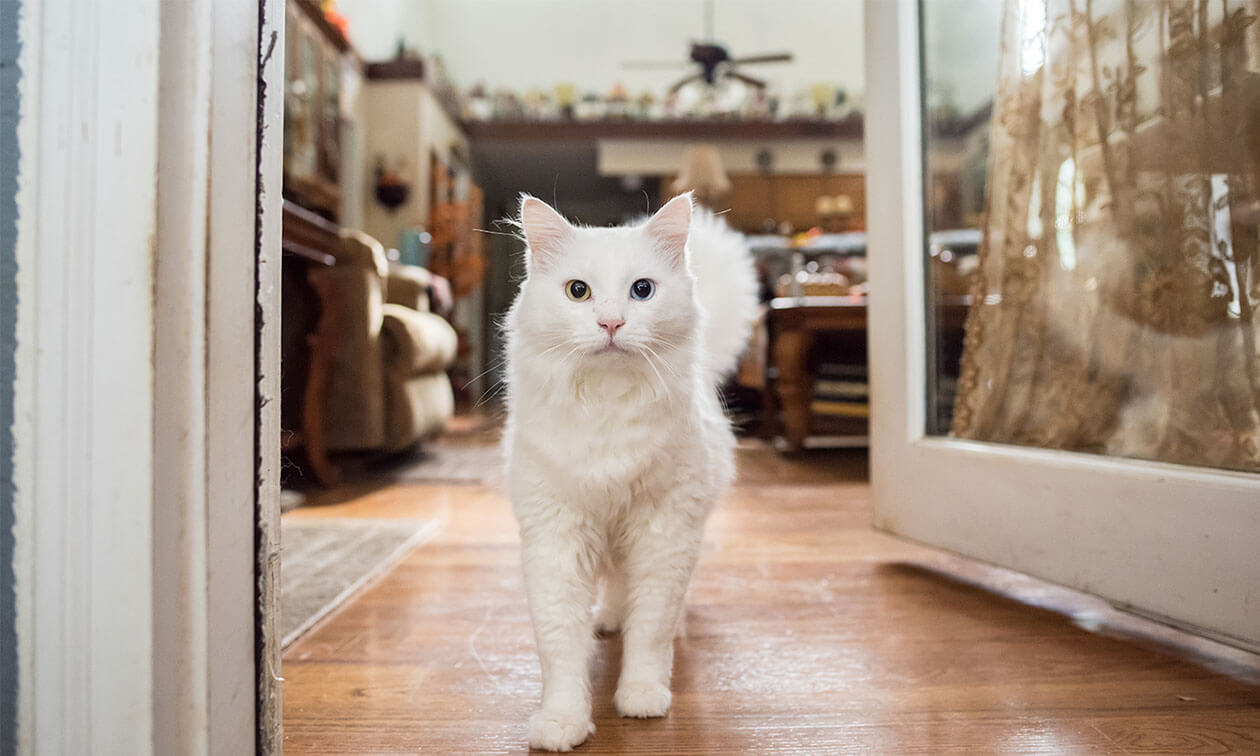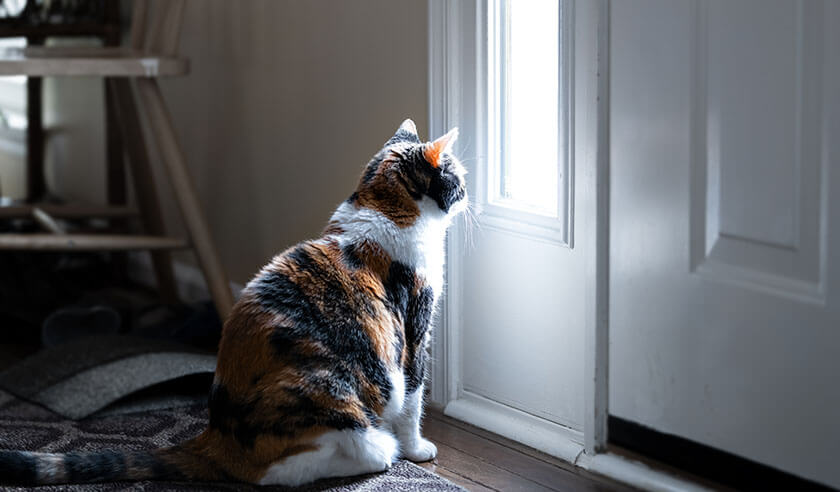Deafness (or the loss of hearing) is an ailment that a cat can be born with because of a genetic defect (called congenital deafness), acquired acutely due to something like a traumatic event (injury), or it can happen gradually over time as they age.
No matter the cause, most deaf cats adapt easily and go on to live healthy and happy lives, relying on their remaining senses (especially vision and touch). They make great pets and are just like any other cat in terms of their needs and personalities — requiring only a few small modifications on your part. Don't let the idea of adopting a deaf cat turn you off — consider it an exciting opportunity to bring an extra special feline furball into your home.
Special Considerations When Adopting a Deaf Cat
- Communication and training. When communicating with your deaf cat, you’ll need to rely on visual forms of interaction, like hand signals. This may require a little extra patience and understanding, but it will quickly become second nature to you and your cat.
- Safety. Deaf cats may be more vulnerable to certain dangers, such as cars and predators. It's important to provide a safe and secure home environment by keeping them indoors. Deaf cats should not be allowed outside as they cannot hear predators or cars coming. You could walk them on a harness and leash or in a secure, enclosed area like a catio. To prevent your deaf cat from escaping, install childproof locks on windows and doors. Provide a safe place for them to hide and retreat, as they may feel more vulnerable without the ability to hear their surroundings.
- Socialization. Deaf cats may be more independent since they don’t get startled by sounds like cats with their hearing. However, they still require socialization to get them comfortable with new things and experiences and lots of positive interaction with their guardian and other pets.
- Identification. Have your deaf cat microchipped and always wear a collar with identification tags in case they ever get lost. You might include a notation on the tags that your cat is deaf.
- Specialized toys. Deaf cats love to play but may not respond as readily to traditional toys that make noise. Try toys that are visually stimulating and provide movement, such as wand toys and treat-dispensing toys. Cats see blues and greens most clearly, so look for toys with these colors.
- Approaching and handling. Be extra careful when you approach your deaf cat, as they will not be able to hear you and may startle easily. To avoid this, always approach your cat from the front where they can see you coming and avoid disturbing them when they are resting. You can also teach your deaf cat that you're approaching them from behind when they feel the floor vibrate from a light stomp. This is especially important if there are children in the house. The children will need to be taught not to startle the cat.
- Clear vision. Cats can see in relatively low light conditions but cannot see in complete darkness. Their eyes, like all mammals, require some level of light to function. They rely more on their hearing and other senses to alert them to movement or danger in dark areas. Keeping nightlights or low ambient light in very dark areas of your home will help your deaf cat see more clearly since they can’t listen for movement.
Overall, deaf cats have the same needs as any other cats. They just require a different approach to things like communication, training, and safety.
Health Considerations of a Deaf Cat
Deafness in cats can be caused by various factors, including genetics, injury, infection, and age. Some breeds, such as white cats with blue eyes, may have a higher risk of congenital deafness. In some cases, deafness may be a symptom of an underlying health condition, such as a brain tumor or inner ear infection. It's important to take your deaf cat or if you think your cat’s hearing is getting worse to the veterinarian for regular check-ups and to rule out any potential health issues. In general, deaf cats require the same level of health care and attention as hearing cats.
Communicating With a Deaf Cat
Visual cues are the best way to communicate with a deaf cat. Here are some tips:
- Use hand signals/sign language. There are no set hand signals for teaching and training a deaf cat. The key is to choose a few clear, simple movements and then be consistent. A good resource is American Sign Language (ASL), or a modification of these signs for simple one-handed use. Alternatively, you can make up your own. No matter what signs are used, be sure to teach them to family and friends so they can communicate with your cat too.
- Use body language. Deaf cats can understand your body language, such as pointing and gesturing. This can be useful for communicating basic commands, such as "come here" or "sit."
- Use lights and vibrations. Flashing lights and vibrations can alert your deaf cat to potential dangers or get their attention. Also, though your deaf cat cannot hear you, you can still speak to them. Place your lips on your cat's head or back while telling them wonderful things, like how much you love them. They'll feel your breath and the vibration of your voice.
- Use touch. Cats are very responsive to touch, so you can also use petting, rubbing, or scratching to communicate with your deaf cat. In addition, try stomping firmly on the floor to get your cat's attention as this will be felt as a vibration.
- Be consistent. It's important to be consistent in your use of visual cues and hand signals so that your deaf cat can learn to understand and respond to them.
- Be patient. Deaf cats may take a little longer to learn new commands and cues, so it's important to be patient and understanding during the training process.
ZPC-02556





